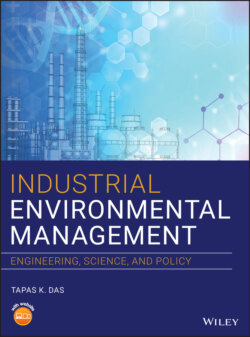Читать книгу Industrial Environmental Management - Tapas K. Das - Страница 34
1.10.5 Designer Wastes
ОглавлениеSo‐called designer wastes can serve as direct feedstock to another sector, or, if properly processed through a conversion technology, as processed feedstock. If the beer industry for example, used a sugar‐based cleanser instead of a caustic cleanser for its bottle‐washing process, the discharge water could serve as a direct feed to fish ponds, without needing any conversion. Yet other solutions will require installation assistance in adjusting or adapting material flows within the client's processes so that its waste output is in an acceptable form.
Building industrial clusters may involve working upstream within a facility to modify its production process so that the waste is produced in an acceptable “designer” form for conversion. Or, perhaps downstream, working with the purchaser industry, to help it modify its processes so that it can accept the converted waste.
This means that the involved engineering consultants must become familiar with the products and materials provided by suppliers to the producer and the materials needed by the purchaser of the designer wastes. All parties must have access to a database of specific information about the level of impurities acceptable in each final product. For example, companies that produce basic material inputs (such as plastics, oils, lubricants, and papers) deal in high volumes and some manufacturing processes can tolerate impurities. These companies are already experienced in their own refining processes and may also be knowledgeable about the manufacturing requirements of their customers, but their expertise may not extend to particular impurities present in the producer's waste stream. The database can provide the information necessary to complete the connections.
